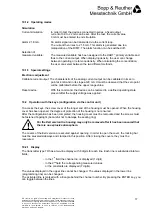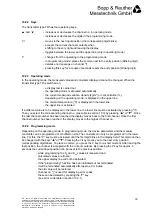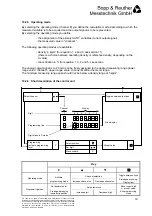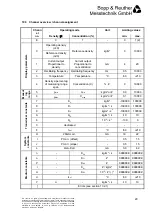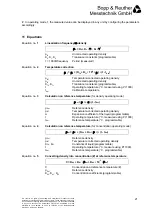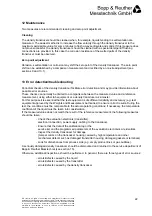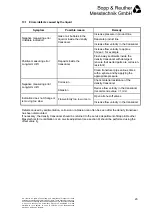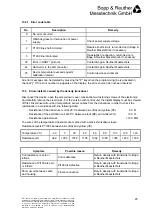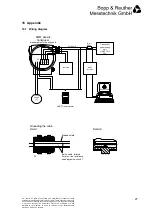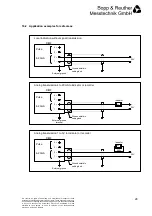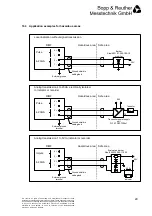
14
We reserve all rights of ownership and exploitation in respect of these
documents, including industrial property rights. These documents may only
be used with our express consent in writing, and only to the extent permitted
in any such consent. The documents may not be duplicated or made
available to third parties. In case of violation of the aforementioned
provisions, we reserve all rights.
9 On-site
adjustment
An on-site adjustment is carried out if an error has been confirmed due to certain on-site conditions after
the reasons according to section 13.1 have been checked. By changing the transducer constant K
0
, a
simple adjustment can be performed.
Example: Measurement
condition
Temperature must be relatively stable
Rho (measured density) = 996.6 Kg/m³
Rho (setpoint value)
= 996.0 Kg/m³ (e.g. value stated in table)
difference (misalignment) = +0.6 Kg/m³
current
K
0
value
= -7360.708 Kg/m³
setpoint K
0
value
= K
0
(current) –
misalignment
correct
K
0
value
= - 7360.708 Kg/m³ - 0.6 Kg/m³
= -7361.308 Kg/m³
Now this value must be entered into the transmitter type TR.
If possible, the constants K
1
and K
2
should not be modified by the user.
Depending on the operating mode or application and the reason for the error, the adjustment can also be
carried out via the concentration coefficient K
X0
. Here the same procedure is applied.
10 Configuration, operation
The transmitter can be configured (operated) in two different ways:
1.
HART
communication
2. On-site operation with keys and display
10.1 Operation via HART
communication
The device can be operated using a PC or laptop and the SensorPort 2 configuration software in
connection with a HART
interface.
A HART
Communicator is another operating element which can be used (e.g. model HC-275 of
Rosemount). The operating functions of the HC-275 are defined in the HART "Device Description
Language" (DDL). Using the HC-275 the DIMF can be operated or configured on site. For the electrical
connection, see section 16.1.

















